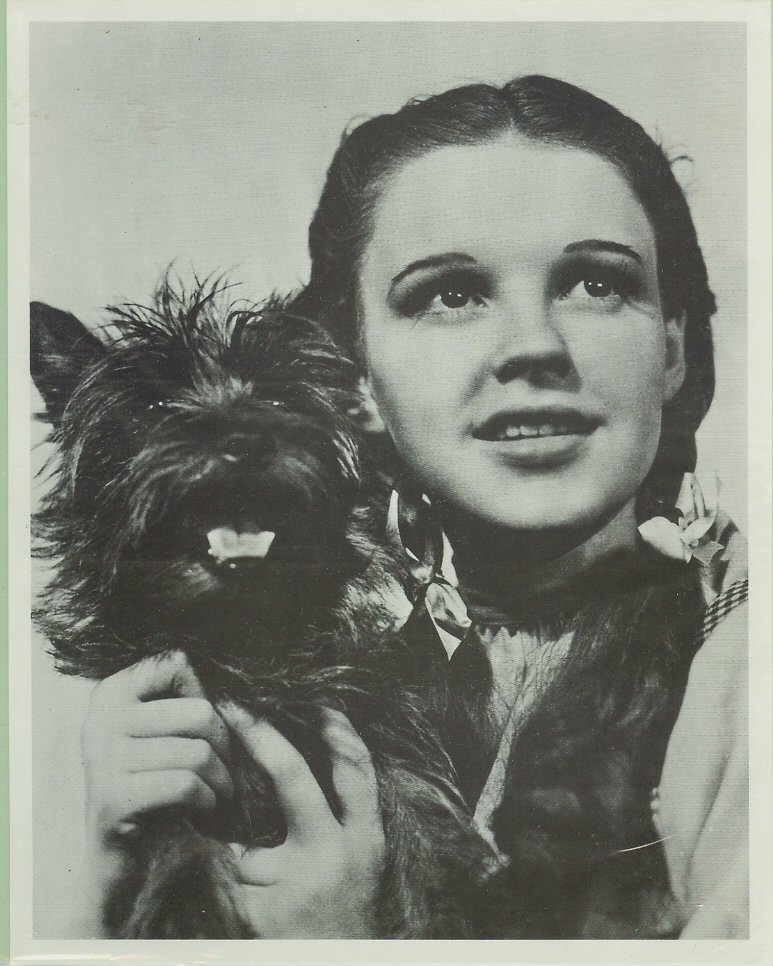A Dog’s Life

Born in 1933, Terry, owned by trainer Carl Spitz, was probably the most famous of all movie dogs. With over a dozen movie credits to her name, she was a sought-after asset for many movie makers, especially MGM in the shooting of The Wizard of Oz. Given the prominence of the “Toto” role in the movie, securing a well-trained dog with movie experience was key. So key, in fact, that while the actors who played the Munchkins were (for the most part) paid $50 per week, Terry commanded more than twice that — $125. (In today’s dollars, that would be almost $2,000 each week!)
The Oz shoot didn’t go without its problems. Midway through filming, one of the Wicked Witch’s guards accidentally stepped on Terry, injuring her and requiring a body double (for the dog, not the guard) for two weeks. Nevertheless, Terry had endeared herself to Judy Garland so much that, by the end of the film, Garland wanted to adopt her; Spitz however refused. He kept Terry, changed her name officially to Toto, and when she passed away in 1945, buried her in his backyard; she was, first and foremost, his pet.
Terry’s legacy lives on in a pseudo-autobiography, I, Toto, written by Oz fan Willard Carroll in 2001. Carroll came upon a scrapbook of photos from Terry’s acting career, and cobbled it together with a faux diary, ostensibly written in Terry’s voice.
Bonus fact: In The Wizard of Oz, the Scarecrow asks the Wizard for a brain and, effectively, receives one. To demonstrate his newfound ability to think, he says: “The sum of the square roots of any two sides of an isosceles triangle is equal to the square root of the remaining side.” This is incorrect (except for triangles with angles of 45, 45, and 90 degrees). The Scarecrow is trying to recite the Pythagorean Theorem, which states that the sum of the square (not square roots) of the smaller two sides (the legs) of a right triangle is equal to the square (again, not square root) of the side opposite the right angle (the hypotenuse). An isosceles triangle is a triangle with at least two equal sides, and is not necessarily a right triangle.

Leave a comment